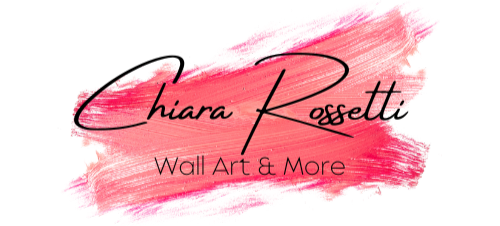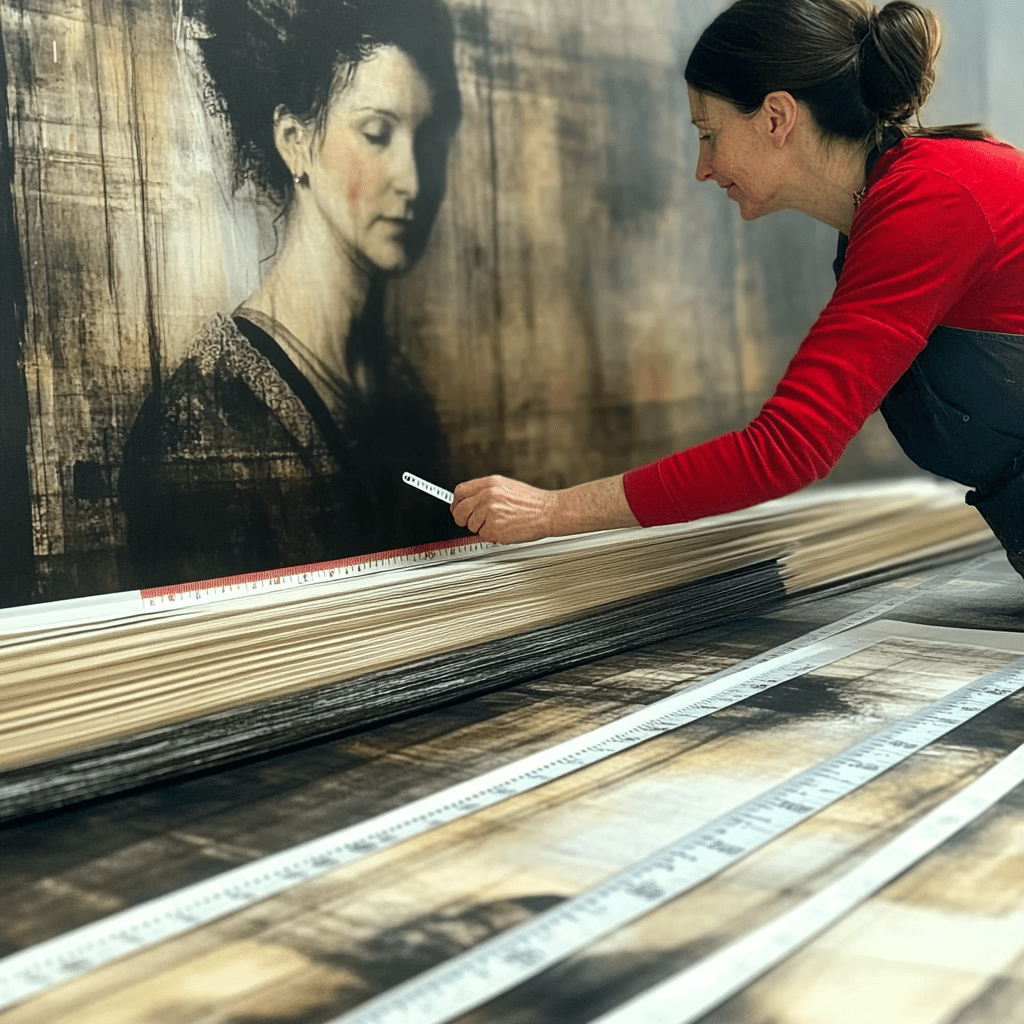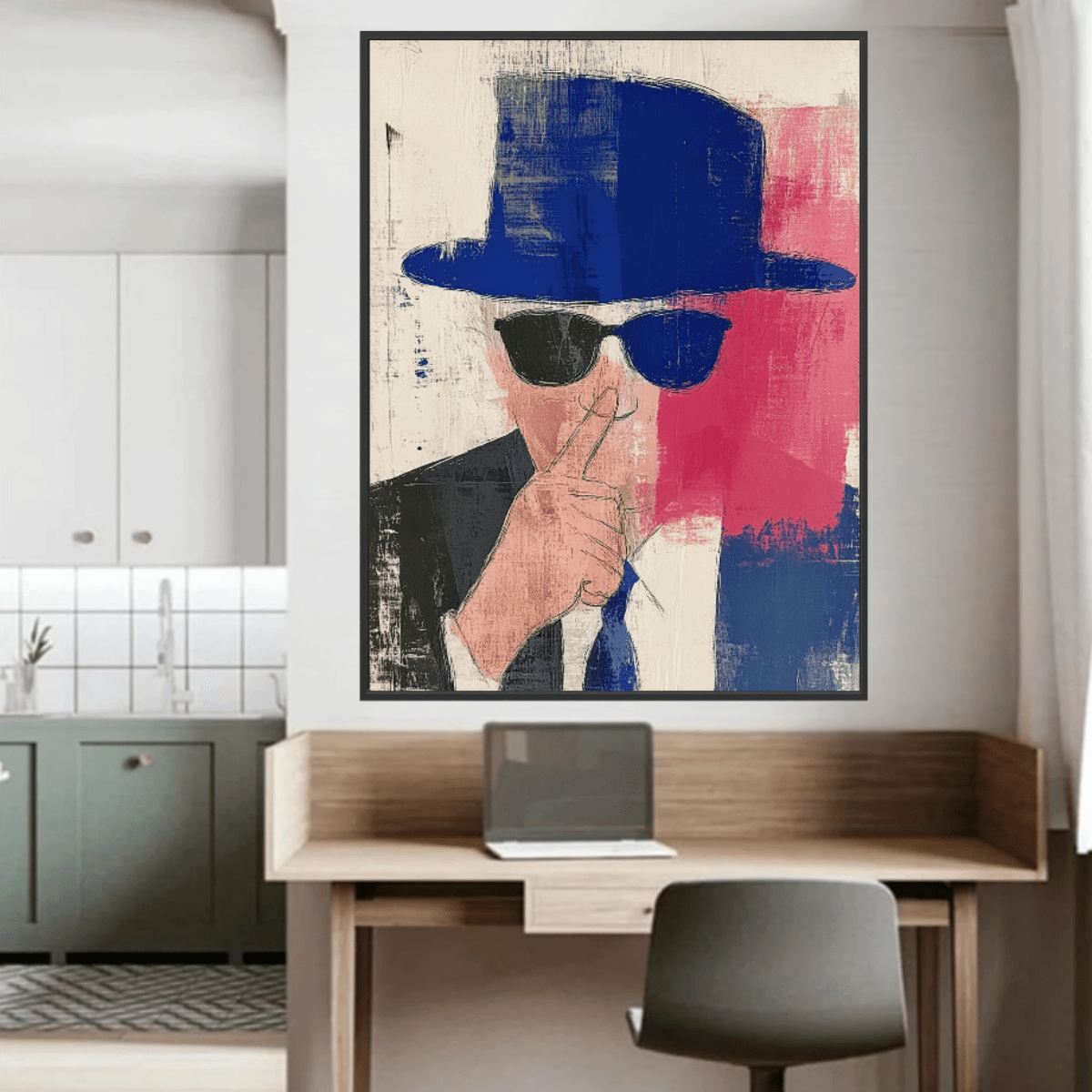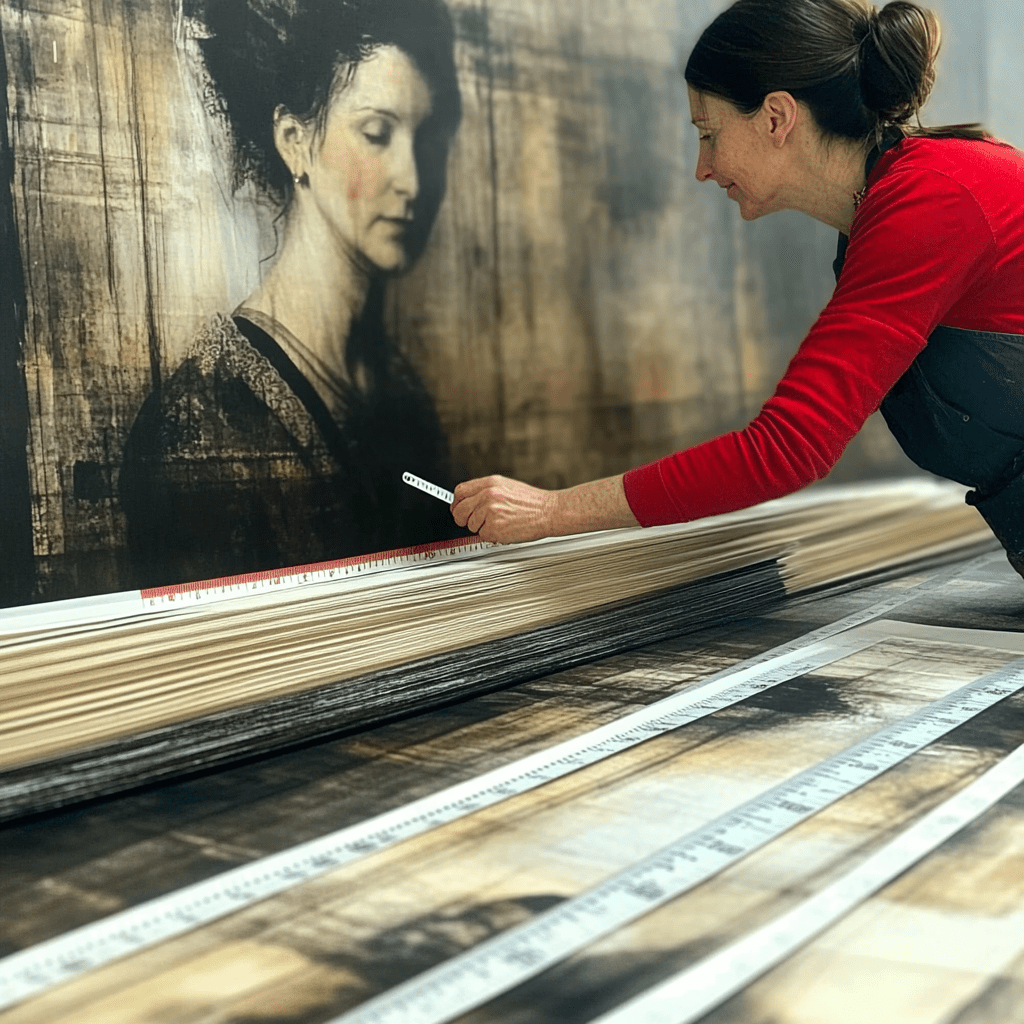Ultimate Guide to Art Print Sizes: Best Print Sizes and Frames
In the world of art, choosing the right print size and frame is critical to presenting and preserving your artwork. Whether you're an artist looking to sell your prints, or a collector aiming to display your favorite pieces, understanding art print sizes and the framing options available is essential. This comprehensive guide will help you navigate the myriad of options, ensuring that your art prints are showcased in the best possible light, whether on your gallery wall or in your living room.
What are the Most Popular Art Print Sizes and Why?

Understanding Standard Art Print Sizes
Standard art print sizes, such as 8x10, 11x14, and 16x20 inches, are popular due to their versatility and accessibility. These sizes fit standard frame sizes, making them easy to frame and display. The convenience of these common print sizes also extends to production, as many printers cater to these dimensions, ensuring that artists can maintain consistent print quality. Additionally, standard art print sizes appeal to a broad audience, making them a staple for both artists and consumers alike.
Why Do Certain Art Print Sizes Sell Better Online?
When it comes to selling art prints online, some sizes sell best due to their compatibility with typical home and office spaces. Popular art print sizes like A4 (8.3x11.7 inches) and 12x18 inches are favored for their ability to fit in a variety of settings without overwhelming the space. These sizes also offer a favorable profit margin for artists, as they balance cost-effectiveness with aesthetic appeal. Additionally, smaller prints are easier and less expensive to ship, further enhancing their popularity among online buyers.
Exploring Different Art Print Sizes for Diverse Art Forms
Different art forms often dictate varying print sizes. For instance, fine art prints and giclee prints tend to be larger, as they capture the intricate details of the artwork. In contrast, digital art often benefits from smaller sizes, especially when considering pixel density and aspect ratio. Contemporary art may embrace a range of sizes, from large art prints that dominate a wall to smaller sizes that can be grouped together for a dynamic display. Understanding the relationship between art form and print size is crucial for artists aiming to reach their target audience effectively.
How to Select the Perfect Frame for Your Art Prints?

Matching Art Print Sizes with Standard Frame Sizes
Matching art print sizes with standard frame sizes is a practical approach that simplifies the framing process. Standard frame sizes like 8x10, 11x14, and 16x20 inches are readily available, making them an ideal choice for popular print sizes. By selecting a frame that corresponds to the print size, you can ensure a snug fit and a professional appearance. This approach also helps maintain the integrity of the artwork, as it minimizes the need for excessive matting or custom framing adjustments.
Custom Framing: When and Why to Use It?
Custom framing is an excellent option for unique or larger size art prints that do not fit standard frame dimensions. It allows for greater creative freedom in selecting frame styles, materials, and finishes that complement the artwork. Custom framing is particularly beneficial for large art prints that require additional support or protection. Additionally, custom framing can enhance the visual impact of your artwork by incorporating elements that highlight specific features or colors within the piece.
Tips for Choosing the Right Frame Style for Your Art
Choosing the right frame style involves considering the artwork's theme, color palette, and overall aesthetic. For contemporary art, sleek and minimalist frames can enhance the modern feel, while traditional artworks may benefit from ornate or classic frames. It's also important to consider the environment where the art will be displayed. For instance, a gallery setting might require cohesive framing to create a unified look, whereas personal spaces allow for more eclectic choices. Balancing these factors will ensure that your art print and frame work harmoniously to create a visually pleasing display.
What is the Best Canvas Size for Large Art Prints?

Exploring Large Art Print Sizes and Their Impact
Large art print sizes, such as 24x36 inches or larger, make a bold statement and are perfect for creating a focal point in any room. These sizes are often used for wall art that demands attention and can transform a space with their presence. The impact of large art prints lies in their ability to showcase intricate details and vibrant colors, making them a favorite among collectors and decorators. However, it's important to consider the available wall space and ensure that the chosen canvas size complements the overall design of the room.
How to Determine the Ideal Canvas Size for Wall Art?
Determining the ideal canvas size for wall art involves assessing the space where the artwork will be displayed. Consider the wall dimensions, furniture placement, and the overall layout of the room. A general rule of thumb is to fill about two-thirds to three-quarters of the wall space to create a balanced look. It's also essential to consider the aspect ratio of the artwork, as this will influence the final dimensions of the canvas print. By taking these factors into account, you can select a canvas size that enhances the room's aesthetic without overpowering it.
Balancing Aspect Ratios with Canvas Print Sizes
Aspect ratio plays a crucial role in determining the final canvas print sizes. Maintaining the original aspect ratio ensures that the artwork's composition and proportions are preserved. This is particularly important for digital art, where altering the aspect ratio can distort the image. When selecting canvas sizes, it's important to choose dimensions that align with the artwork's natural aspect ratio. This approach not only preserves the integrity of the piece but also enhances its visual appeal when displayed on a large scale.
Is Selling Art Prints Online Profitable?

Factors Influencing the Profitability of Art Prints
The profitability of selling art prints online is influenced by several factors, including print quality, pricing strategy, and market demand. High-quality prints, such as giclee prints, can command higher prices due to their superior reproduction and longevity. Additionally, artists must consider the cost of materials, production, and shipping when setting prices to ensure a favorable profit margin. Understanding the target audience and trends in art online can also help artists tailor their offerings to meet consumer preferences and increase sales.
Common Art Print Sizes That Sell Well Online
Common art print sizes that sell well online include 8x10, 11x14, and 16x20 inches, as these dimensions are versatile and cater to a wide range of tastes and interior design styles. Smaller prints, such as A4 and 5x7 inches, also perform well due to their affordability and ease of shipping. These sizes are ideal for buyers looking to curate a collection or add a touch of art to their personal spaces. By offering a variety of sizes, artists can appeal to different customer needs and maximize their online sales potential.
Strategies for Selling Art Prints on Demand
Selling art prints on demand involves leveraging technology and print services to fulfill orders as they are received. This approach reduces the need for inventory and allows artists to offer a wide range of print sizes and styles without upfront costs. Utilizing platforms that specialize in print-on-demand services enables artists to reach a global audience and expand their market presence. Effective marketing strategies, such as social media promotion and targeted advertising, can further enhance visibility and drive sales, making this a profitable avenue for selling art prints online.
How to Choose Between Large or Small Art Prints for Your Gallery?
Pros and Cons of Large Art Prints in a Gallery Setting
Large art prints in a gallery setting can create a striking visual impact and draw viewers' attention. These pieces often serve as focal points, anchoring the exhibition and setting the tone for the entire collection. However, large art prints also require ample wall space and careful consideration of their placement to avoid overwhelming the gallery. Additionally, the cost of producing and framing large prints can be higher, which may affect the overall budget for the exhibition. Balancing these factors is crucial when deciding to include large art prints in a gallery show.
When to Opt for Smaller Art Prints?
Smaller art prints are ideal for galleries with limited space or for exhibitions that aim to showcase a variety of artworks. They allow for greater flexibility in arrangement and can be grouped to create interesting compositions. Smaller prints are also more accessible to a broader audience, as they tend to be more affordable and easier to transport. When curating an exhibition, incorporating smaller prints can provide diversity and contrast, enhancing the overall viewer experience.
Creating a Balanced Gallery with a Mix of Sizes
Creating a balanced gallery involves carefully selecting a mix of art print sizes to ensure a cohesive and engaging display. By combining large and small prints, curators can create dynamic visual interest and guide viewers through the exhibition. Consideration should be given to the flow of the gallery, ensuring that each piece is given adequate space to be appreciated. This approach not only highlights the diversity of the artwork but also enhances the storytelling aspect of the exhibition, making it a memorable experience for visitors.
Enhance Your Space with Unique Modern Masterpieces
Are you inspired by the innovative mediums and conceptual depth highlighted in our exploration of contemporary art? You’re not alone! Today’s art enthusiasts are seeking cultural relevance and emotional connections in their artwork. However, finding pieces that resonate with modern themes and fit your unique style can be a challenge. That’s where we come in!
At Rossetti Art, we specialize in canvas prints, original paintings, and modern sculptures that celebrate the spirit of now. Each piece created by Chiara Rossetti brings a personal touch that connects deeply with current social narratives—just like the modern masterpieces discussed in the article. Don’t miss out on the chance to elevate your home decor with breathtaking artwork that speaks to your values and aesthetic. Explore our collection today and find your perfect piece! Act now, and transform your space into a gallery of inspiration!
FAQ
Q: What are the standard sizes for art prints?
A: Standard sizes for art prints often include 8x10 inches, 11x14 inches, 16x20 inches, and 24x36 inches. These sizes are commonly used because they fit popular frames and are easier to find in stores, making them a convenient choice for both artists and buyers.
Q: What is the best size for digital art prints?
A: The best size for digital art prints depends on the intended display and resolution of the artwork. A common size for digital art is 300 DPI (dots per inch), allowing for crisp and clear prints. Popular art print types for digital works include sizes like 12x18 inches and 20x30 inches.
Q: How do different sizes of art impact its appeal?
A: Different sizes of art can significantly impact its visual appeal and the space it occupies. Smaller artwork is ideal for intimate settings or small spaces, while larger prints can create a bold statement on art gallery walls or in larger rooms. Medium art sizes are versatile and can fit a variety of settings.
Q: What are some common print sizes for art?
A: Common print sizes for art include 5x7 inches, 8x10 inches, 11x14 inches, 16x20 inches, and 24x36 inches. These sizes are popular because they are widely available in stores and online, making them easier to sell and frame.
Q: How do I choose the right size for my art prints?
A: Choosing the right size for your art prints depends on the space where the art will be displayed and the desired impact. Consider the wall space available, the style of the room, and how the artwork will complement existing decor. Creating a gallery wall with a mix of sizes can add visual interest and depth.
Q: Why are custom sizes important for art prints?
A: Custom sizes are important for art prints because they allow artists and buyers to create pieces that perfectly fit unique spaces or specific design requirements. Custom sizes can help match the dimensions of a particular wall or frame, ensuring the artwork complements its environment.
Q: What are some popular art print types?
A: Popular art print types include fine art prints, acrylic prints, and canvas prints. Each type offers a different aesthetic and can enhance the artwork in unique ways. Fine art prints are known for their high quality and detail, while acrylic prints provide a modern, glossy finish. Canvas prints offer a textured, classic look.
Q: How do I determine the most profitable art print sizes to sell?
A: To determine the most profitable art print sizes to sell, research your target market and understand what sizes are in demand. Consider offering a range of standard sizes and popular sizes that are easier to sell. Also, pay attention to trends in modern art and adjust your offerings accordingly to appeal to buyers.
Q: Can creating art prints in different sizes help increase sales?
A: Yes, offering art prints in different sizes can help increase sales by appealing to a wider audience. Different customers have varying space requirements and preferences, so providing multiple sizing options allows you to meet more buyers' needs and increases the likelihood of selling your art.




Leave a comment
This site is protected by hCaptcha and the hCaptcha Privacy Policy and Terms of Service apply.